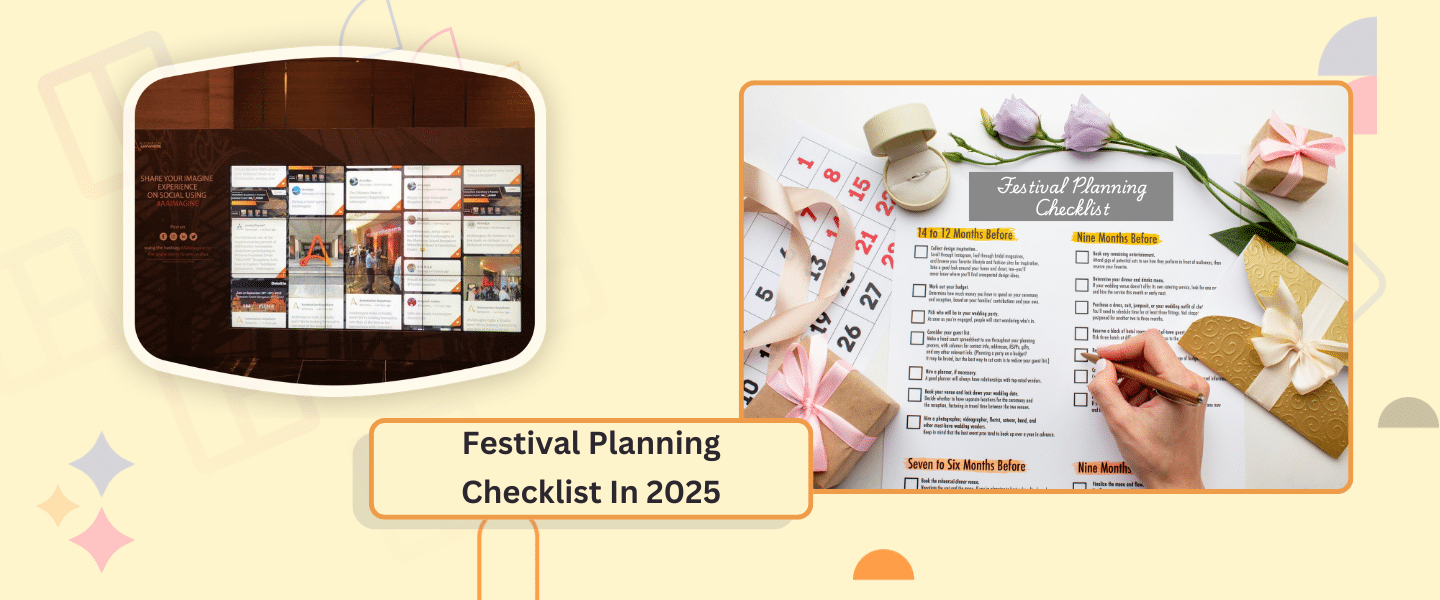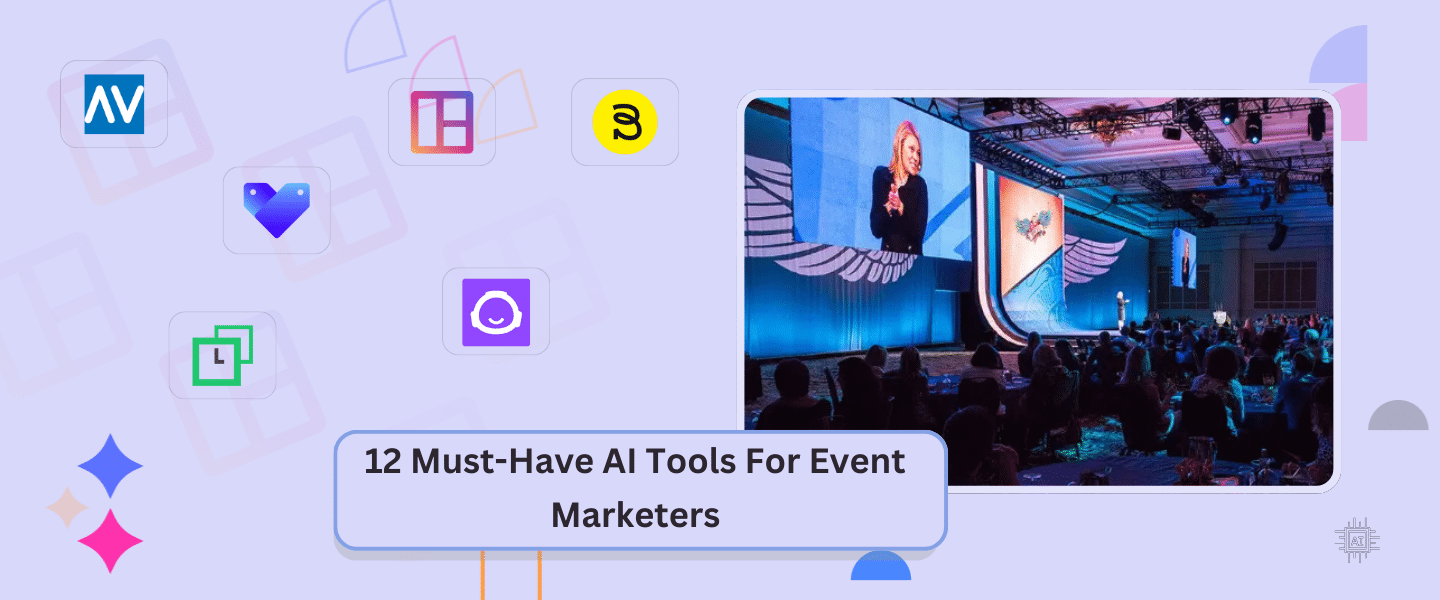Ultimate Festival Planning Checklist For Successful Events In 2025
Author: Wagisha Adishree
9 minute read
You already know that the festival planning checklist is a hassle.
So let’s skip the lecture.
You have pulled all nighters, last-minute vendor swaps, and the where-are-the-volunteer panic.
We know you are not here for sympathy but for a festival planning checklist that works.
This festival planning checklist does not state the obvious, like “don’t forget the stage.” Instead, it tells you how to manage vendors, UGC, and the social media wall during the festival.
Do you see the spectrum?
So without any further ado, let us get into it.
Festival Planning Checklist For 2025
Here is a breakdown of the festival planning checklist for 2025.
Pre-Planning Stage
1. Define the Festival Concept
Planning a successful event begins with clearly defining its concept. This is one of the initial steps in the festival planning checklist, which will help you generate more buzz around your festival.
Defining the festival means clarifying the event’s theme, target audience, availability of refreshments, and more.
2. Budget Planning
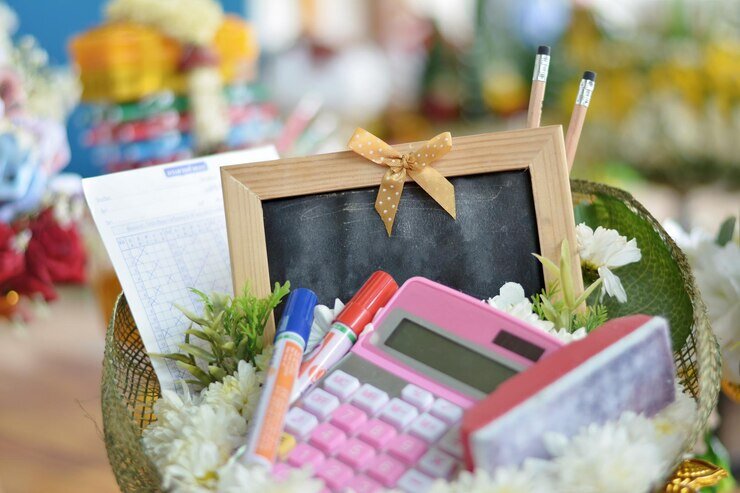
Create a realistic budget that covers all aspects of your festival, such as venue rental, marketing, and logistics. This will help you achieve financial sustainability and effective resource allocation, minimizing financial risks and maximizing returns. With the right accounting software, you’ll have real-time insights into your festival’s financial performance. Using accounting software can streamline this process by tracking expenses and ensuring your budget stays on target.
3. Create a Timeline
An event festival timeline helps the organizers stay on track and know their spending. This helps them complete all the tasks chronologically. It also helps them share the progress with the stakeholders and brand partners and avoid unforeseen circumstances.
4. Secure Funding & Sponsors
You must attract the industry’s best sponsors to improve your festival’s financial success. Look for potential sponsors before you start planning the festival. Sponsors help organizers to avoid financial risks and ensure the festival’s long-term success.
For better event sponsorship Ideas, read the referenced blog.
Logistics & Venue Setup
Another component in the festival planning checklist is logistics and events.
1. Venue Selection & Permits

Venue selection is one of the important factors in the festival’s success. The process considers good location, capacity, and basic amenities. Organizers must also get necessary permits to ensure compliance with local rules and regulations. A festival-worthy venue improves attendees’ experience and helps create a positive atmosphere.
2. Vendors & Suppliers
Coordinating with vendors and suppliers is equally essential for a high-quality festival experience. To manage this, organizers must select reputable vendors and negotiate with contractors. They must also ensure the timely delivery of goods and services.
3. Security & Safety Measures
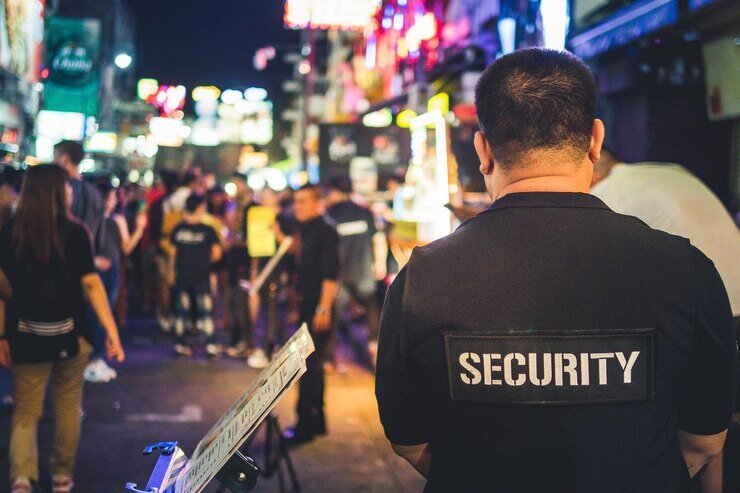
Another element of the festival planning checklist is ensuring the attendees’ safety and security. Organizers must look after arson control, crowd control, emergency response, and more. Take a proactive approach to avoid the risks and get volunteers to manage your event festival.
Programming & Entertainment
Programming and entertainment are two of the crucial milestones of the festival planning checklist.
1. Talent & Performers
Book talented performers and artists that align with the theme of your festival. This will enhance the overall experience and attract a diverse audience. If you are organizing an event in a culturally rich area, invite local artists to connect more with the audience. Research, negotiate contracts, and streamline the paperwork using a reliable contract generator, then ensure performers are well-promoted to generate buzz and drive ticket sales.
2. Add Social Media Walls
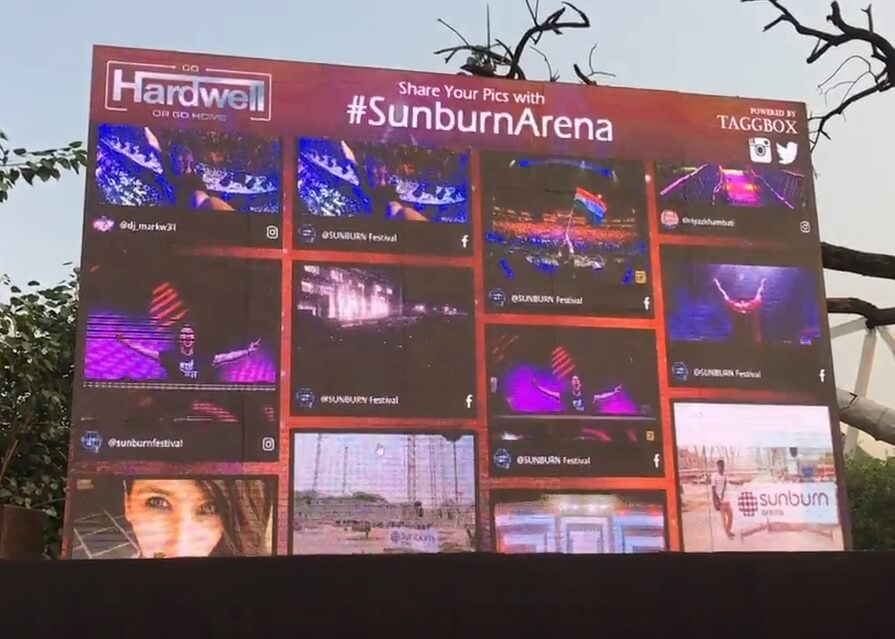
A social media wall helps engage attendees and display real-time user-generated content during the event. Many social wall platforms, like Social Walls, allow attendees to share their experiences via SnapUp. This only requires scanning a QR code and uploading pictures or videos without any social media login. You can also include live polls and Reaction features with Social Walls. You can refer to the linked blog to better understand event gamification ideas.
3. Activities & Attractions
In the festival, offer a scope of activities and attractions to engage your audience before the event starts. For example, include games, art installations, and more. Another smart way to engage your audience is to install food stalls that match the festival’s vibe.
Also Read: 15 Best Event Activation Ideas to Boost Event Engagement in 2025
4. Technical Setup
Another priority checklist item is the technical setup. This requires considering aspects such as sound and lighting, which are well-planned and executed. As a festival organizer, hire experienced technicians, conduct thorough sound checks, and install backup systems. Know that the technical setup is essential for providing high-quality attendees with a high-quality experience.
Marketing and Promotion

Another unskippable component of the festival planning checklist is marketing and promotion. Take a look at the breakdown.
1. Branding & Design
Develop a strong brand identity and visual aesthetic for your festival. This will help the target audience remember the event better. Branding your event includes creating a logo, color scheme, typography, and overall visual style. Consistent branding helps establish recognition, builds credibility, and creates a memorable experience for attendees.
2. Online Promotion
Promoting on social media, email marketing, websites, and paid ads is highly beneficial. This helps reach a wider audience, drive ticket sales, and create a community around the event. With the ongoing trend, you can opt for influencer partnerships and content marketing. To support outreach efforts, using an email finder can help you connect with relevant contacts and expand your promotional reach more effectively.
Also Read: What Is Promotional Mix- Definition, Components and Examples 2025
3. Traditional Marketing
Print media, radio ads, or announcements might seem outdated. However, this is the impactful approach. 82% of consumers trust print ads the most when they make money-related decisions.
This can also include placing ads in newspapers, magazines, and other publications and distributing flyers and posters in public areas.
Ticketing and Registration
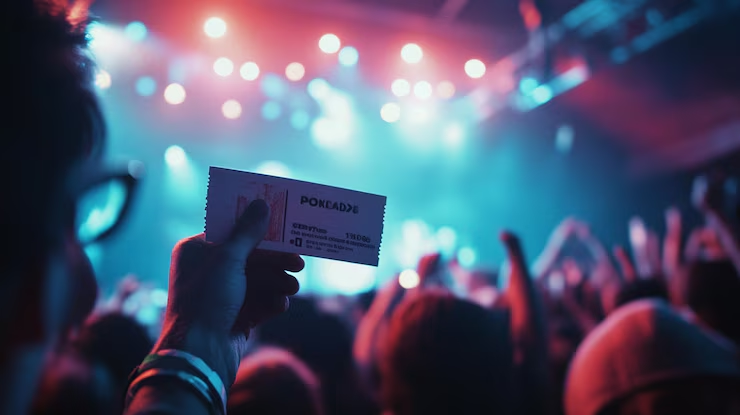
Another element of the festival planning checklist is ticketing registration.
1. Ticket Sales Strategy
High ticket sales strategy is a time-consuming and strategic process that demands more visibility for your event. You must create an attractive offer that also gives your target audience FOMO. To begin with, faster and heavier ticket sales, you can also launch an early bird discount. It is an excellent technique for turning potential buyers into ASAP buyers.
However, there may be times when your customers visit your website and still do not make the purchase. In such a scenario, you can offer them a discount that would push them to purchase. You can also launch giveaways on social media platforms to maximize the visibility of your festival. Every time you share an advertisement on social media platforms, mention the last date of registration and the number of seats left to create a scarcity mindset among them.
2. Check-In & Entry Management
Once tickets are sold, a seamless check-in and entry management process is essential. Implement a reliable ticketing system that allows easy check-ins without letting attendees wait their turn.
Also Read: Event Technology: The Ultimate Guide For Event Success in 2025
Execution & On-Site Management

The next and last milestones in the festival planning checklist are execution and on-site management.
1. Staff & Volunteers
Recruit a team of volunteers to manage your festival. Ensure they have the necessary skills and experience relevant to your event. With the help of Diversity Recruiting Software, you can build an inclusive team that brings different perspectives and strengths. Please provide them with the best equipment to ensure your attendees receive excellent customer service.
2. Event Day Coordination
Oversee the logistics and preparations for the festival on the day of the final event. This means you must keep a check on managing setup, vendor coordination, and crowd control.
3. Sustainability & Waste Management
Sustainability and waste management are aspects of the festival planning checklist as they help minimize the environmental impact. Coldplay is a good example of an event planner responsible for sustainability and waste management.
Across the tour, they used renewable diesel, a palm-oil-free HVO-type biofuel produced 100% from renewable raw materials, primarily waste and residues such as used cooking oil. They also banned single-use plastic bottles at their events or music festivals.
Post-Festival Wrap-Up
The post-festival wrap-up is a critical phase that helps the organizer quantify the event’s success. Look at the post-festival planning checklist to see what factors organizers should consider.
1. Evaluation & Feedback
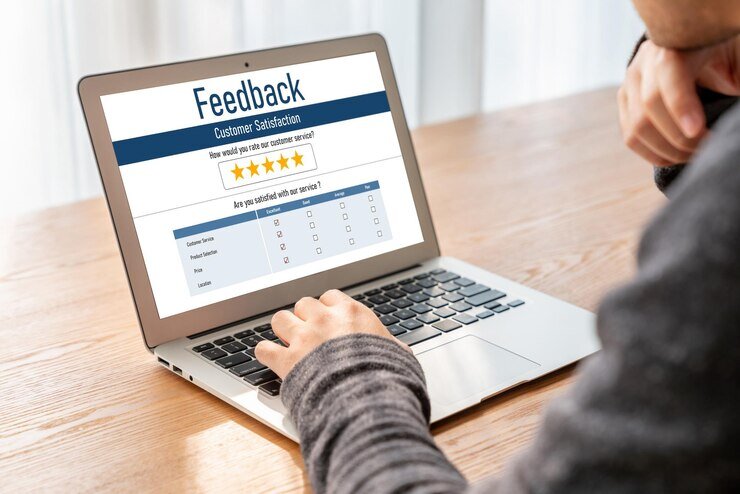
Conduct thorough research and collect feedback from the attendees. Identify areas for improvement and measure the event’s impact by asking your attendees, sponsors, and stakeholders if the event meets their expectations.
If you have used Social Walls to showcase content on digital displays, you can go to the analytics section. This will help you get hands-on experience with the attendees and know what worked best for the festival.
2. Public Relations & Media
One of the essential elements of the post-festival planning checklist is having a good relationship with the Press and media. This also helps create a buzz around the event and build anticipation among the audience to follow up for the next event.
Also Read: Ultimate Event Planning Checklist: Your Guide to Successful Events
3. Cleanup & Vendor Settlements
A smooth cleanup and settling of vendor accounts are essential to wrap up the festival’s logistics. Once the festival is over, connect with the vendors and suppliers to ensure that every piece of equipment is returned and the venue is restored to its original state.
Conclusion
We have jotted down the festival planning checklist, which will serve as a central repository for event-specific data. You won’t have to keep multiple tabs open to see what’s missing and what should be included in your festival planning checklist.

